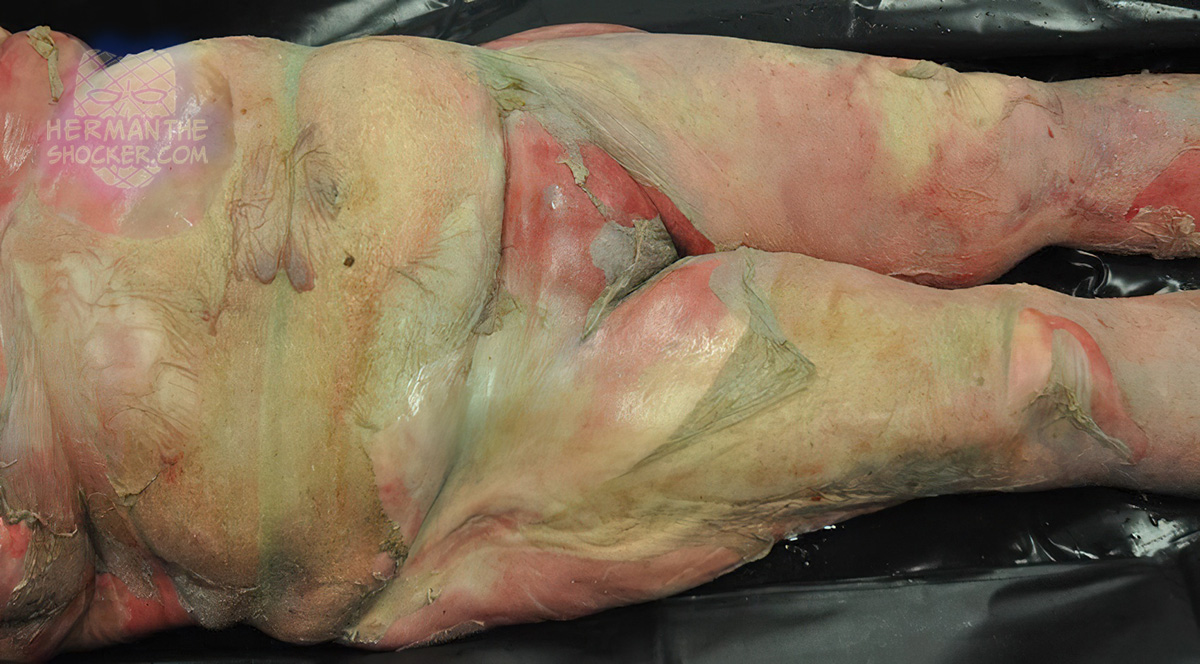Skin slippage is a part of the decomposition process when the top layers of skin become disconnected from layers below and can, therefore, “slip” off the body. Taking place relatively early in the process, it happens through a process when enzymes are released and cells holding layers of skin together start to rupture forming what looks like blisters, leaving a sticky surface behind. As the epidermis layer of skin separates from the dermis layer, these superficial layers can then start sloughing off or peeling away. Where this happens on the body can vary greatly but it is particularly common for the skin to first detach on the hands and feet where skin can be removed like a sock or glove cast off and no longer needed.
When a dead body is submerged in water while it decomposes, skin slippage takes place in around 24 hours. With water soaking through the top layers of skin, the cells holding the layers together separate far faster, letting in more bacteria into the rest of the body to aid in decomposition. This is one of the reasons a body found in a lake or river can be so unrecognizable so quickly—the water speeds the whole process along.
Latest posts








